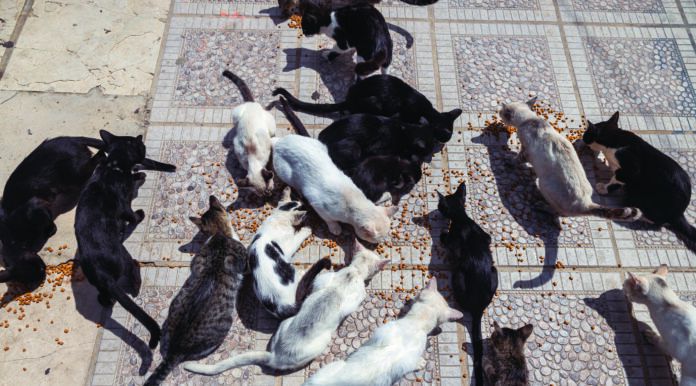There are an estimated 600 million cats in the world, and almost 500 million of them are free-roaming. Up to 100 million homeless cats live in the U.S. alone. They often survive in suboptimal conditions while they prey on vulnerable wildlife. And they frequently enough get euthanized at overcrowded shelters even though there is absolutely nothing wrong with them. The answer is sterilization to prevent more unwanted cats from coming into the world, and dedicated cat lovers work hard in trap-neuter-release programs where they capture cats, take them to a willing veterinary facility to have them spayed or neutered, and then return them to their feral lives.
But it’s an uphill, labor-intensive, one-by-one slog. Each cat has to be caught and transported — no mean feat — and a veterinary facility has to have the wherewithal to deploy the necessary resources. That includes a doctor to do the sterilizing surgery, support staff, and anesthetic drugs for the operation. If it’s a female, it could take her up to 10 days to heal fully.
Now the results of a promising study published in the journal Nature Communications shows there may be another, more efficient way: injecting female cats with the gene for producing a hormone that in large doses can keep ovulation from occurring for years, perhaps permanently, and thereby make a cat infertile. The hormone is already produced naturally in cats. Nothing foreign is introduced.
Research nuts and bolts
Scientists led by a team at the Cincinnati Zoo & Botanical Garden’s Center for Conservation and Research of Endangered Wildlife first tried the hormone — anti-mullerian hormone, or AMH — in female mice and found that it induced permanent contraception in that species. Then they “recruited” nine feral cats for a similar study. All were given the names of former first ladies — Michelle, Abigail, Betty, Rosalyn, Nancy, Jacque, and so on.
Three of the cats served as a control group while six were placed in the experimental group. Each of those six was given an intramuscular shot of the gene for the hormone in their thighs.
Muscle tissue was chosen intentionally. Muscle cells are extremely long lived, so at whatever level the gene was introduced, it would be subject to stable conditions and the muscles could therefore keep manufacturing an excess of the hormone at the gene’s instruction. And while that could have an effect on ovulation, a single process that goes on in the body, it could not infiltrate a cat’s own DNA and manipulate her genome. Each cat remained who she was.
At both 8 months and 20 months after the shots were administered, the researchers introduced a male cat into the group. While two of the female cats given the hormone allowed the male to engage in breeding behavior with them (Dolly and Barbara, if you must know), only the untreated cats became pregnant. The excess AMH successfully inhibited ovulation. That is, the cats’ eggs were never released.
What happens now?
All of the cats remained healthy throughout the process and afterward. It seems that injections of the hormone gene can reach its goal of inhibiting ovulation while not adversely impacting a female cat’s health.
Still, it is going to be a while before we get from here to there, the researchers say. Although they are optimistic about the results, a single nine-cat study is not enough to make a global policy change for how to stem the tide of feline overpopulation. Even when this method of contraception is approved and can make it into veterinarians’ hands, it is going to take time to scale efforts so that the hormone gene is widely available in injectable form.
But stay tuned. A way to sterilize a cat that doesn’t involve a surgery with anesthesia and a significant recuperation period is coming. It will be useful to people with pets in addition to those working to control the population of homeless felines.




